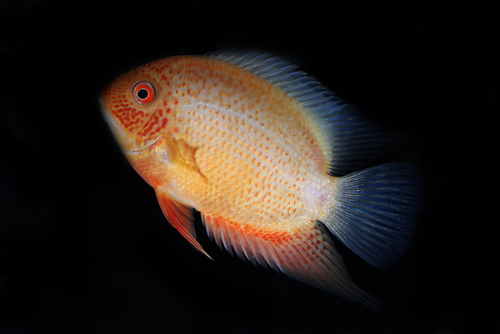You can add fish from all over the world to create a harmonious tank community. Many aquarists often wonder if you can keep golden severum cichlids together with more gentle types of fish.
The good news is that it’s entirely possible since severums are generally peaceful cichlids who enjoy playing and showing off their colors in the water. They get along well with many other kinds of similar-sized freshwater fish.
Some of the best companions for a severum community tank include tetras, angelfish, plecos, loaches, catfish, barbs, and swordtails.
Check out this list of the 15 best golden severum tank mates to help you pick the perfect partner.
Contents
What You Need to Know
Cichlids are a popular choice for a freshwater aquarium due to their bright color and playful nature.
Here are a few things that you should know about a severum’s water parameters to keep it and its tank mates happy and healthy.
Water temperature should fall between 72° to 84° F, while water hardness should stand at 1 to 8 KH, and pH should fall between 5.5 to 7.2. A single severum needs a 75-gallon tank, while a group of severums or other fish of the same size need at least a 125-gallon tank depending on how many fish you add.
The fish on this list do well with the range of water temperature, pH, and hardness required by Severums, so just dial in the numbers for the more sensitive fish choices and you’ll be good to go.
The 15 Best Golden Severum Tank-Mates
You also shouldn’t miss these other top picks in a similar category:
1. Angelfish
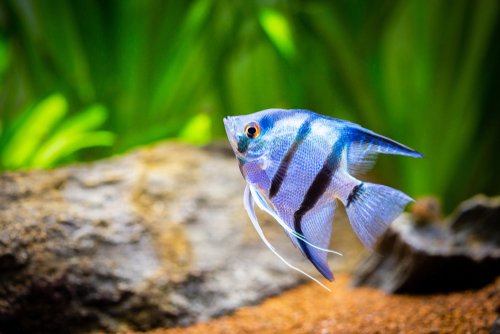
- Scientific name: Pterophyllum scalare
- Origin: Amazon River in South America
- Size: 5 inches
- Care level: Medium
Angelfish come in a stunning array of blue, golden, red, orange, yellow, iridescent silver, and purple sheens, multicolored, and black. These adorable pets are about the same size, jive well with golden severum temperament, eat the same foods, and even like the same water parameters.
Pros of Keeping With Golden Severum
- Easy to care for and require similar water conditions as severum
Cons of Keeping With Golden Severum
- Severums can nip at Angelfish’s long, streaming fins
2. Cherry Barb
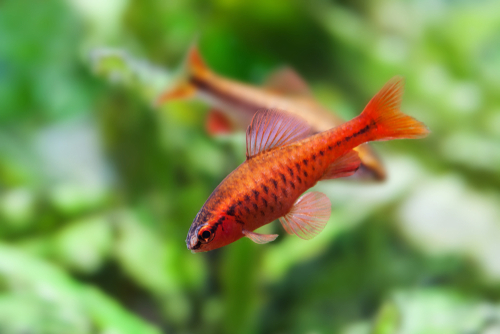
- Scientific name: Puntius titteya
- Origin: Mexico
- Size: About 3 inches
- Care: Basic
Unlike many other barbs, cherries are a slow variety that don’t attack their fellow tank mates. They like to live in a school, are adaptable to a wider range of water parameters than some other species, and will wolf down any kind of food in sight.
Pros of Keeping With Golden Severum
- Don’t take up a lot of room
Cons of Keeping With Golden Severum
- Tend to contract fin rot diseases
3. Bristlenose Pleco
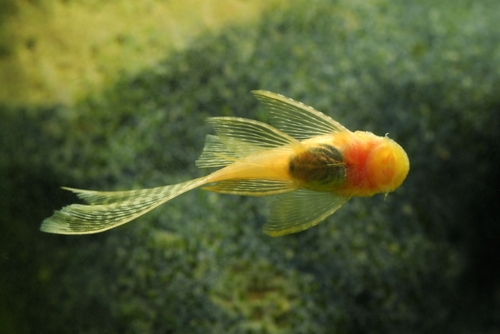
- Scientific name: Ancistrus cirrhosus
- Origin: South America
- Size: About 5 inches
- Care level: Moderate
This sluggish catfish species won’t compete for space or food with severums. Instead, they will tolerate similar water conditions. They do need to have a big tank with frequent water changes because, like most catfish, they emit a ton of waste.
Pros of Keeping With Golden Severum
- Expert algae eaters
Cons of Keeping With Golden Severum
- Eats a lot and makes a lot of waste
4. Neon Tetra
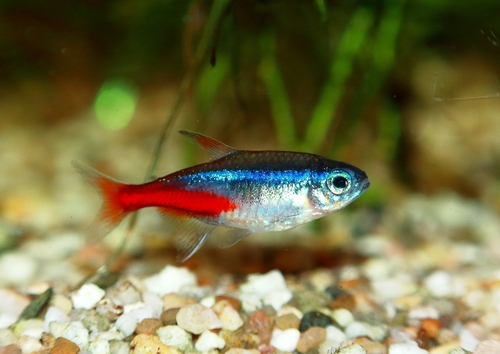
- Scientific name: Paracheirodon innesi
- Origin: South America
- Size: Close to an inch
- Care: Basic
This vivid fish is like a bright red, silver, and blue rainbow zipping around an aquarium. Neon Tetras are gentle and thrive in similar water conditions, but need food crushed into tiny bits because of their small mouths and prefer a tank that has filtered light.
Pros of Keeping With Golden Severum
- Friendly and active
Cons of Keeping With Golden Severum
- May get stressed easily
5. Corydoras Catfish
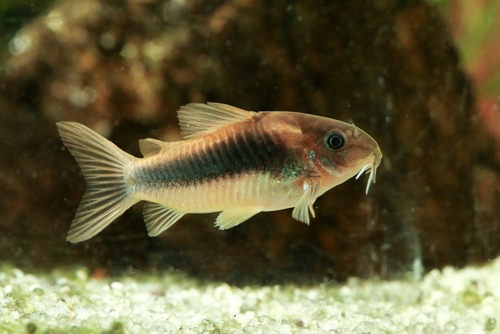
- Scientific name: Corydoras spp
- Origin: Uruguay
- Size: 2.8 inches
- Care: Moderate
Any catfish is going to harmonize nicely with a severum although they both spend time near the substrate. The cory is happy to munch on debris and happily keep to itself in its own school.
Pros of Keeping With Golden Severum
- Low-maintenance, algae-eater, and has a long lifespan
Cons of Keeping With Golden Severum
- Can get bullish if the water conditions are incorrect or the tank isn’t kept clean
6. Red Swordtail
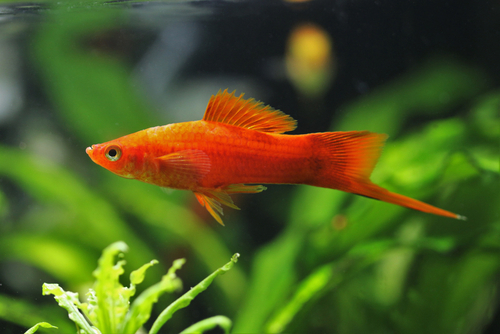
- Scientific name: Xiphophorus hellerii
- Origin: Mexico
- Size: At least 5 inches
- Care: Basic
A red swordtail isn’t the feisty fighter that its name suggests. Instead, this slim fish with a tail shaped like a weapon is friendly to most fish, including severum. They are omnivorous and can thrive with the same water temperatures and pH as their cichlid tank mates.
Pros of Keeping With Golden Severum
- Low-maintenance care
Cons of Keeping With Golden Severum
- Might not live long
7. Rainbowfish
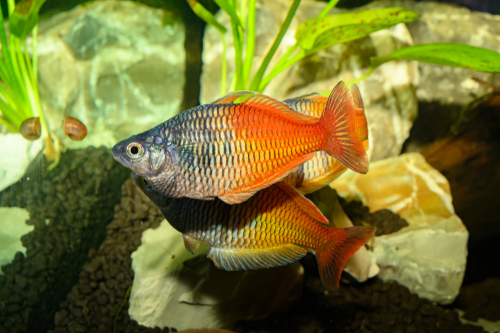
- Scientific name: Melanotaenia boesemani
- Origin: Indonesia
- Size: About 3 or 4 inches
- Care: Moderate
Offset a plain tank community by considering the dazzle of sparkling colors that come from a rainbowfish. Choose from an array of patterns and blended shades to find your perfect addition to a severum tank. This fish is fun to watch at night as their colors come into full play after dark.
These fish are omnivores, which makes them easy to keep, but they also require a more alkaline water range than Severum.
Pros of Keeping With Golden Severum
- Unique and peaceful
Cons of Keeping With Golden Severum
- Prone to columnaris disease
8. Pearl Gourami
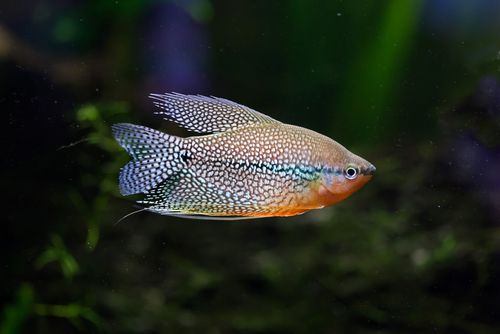
- Scientific name: Trichopodus leerii
- Origin: Malaysia
- Size: Around 5 inches
- Care level: Basic
These delicate beauties are also called lace gourami for their mosaic-type pattern on gold, red, blue, or silvery bodies. They keep to themselves and have a lovely, easygoing nature, even towards smaller fish.
They can eat anything from veggies to worms and have compatible water needs.
Pros of Keeping With Golden Severum
- Great for beginners
Cons of Keeping With Golden Severum
- Prone to contracting different infections
9. Kuhli Loach
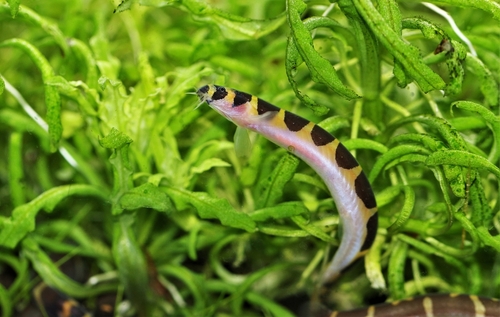
- Scientific name: Pangio kuhlii
- Origin: Indonesia
- Size: Close to 3 inches
- Care level: Medium
This worm-shaped, nocturnal catfish might look like an eel lurking among the rocks and substrate, but it’s a gentle tank mate who only comes out at night to feed.
Pros of Keeping With Golden Severum
- Mellow mood and good for cleaning aquariums
Cons of Keeping With Golden Severum
- Susceptible to health problems
10. Harlequin Rasbora
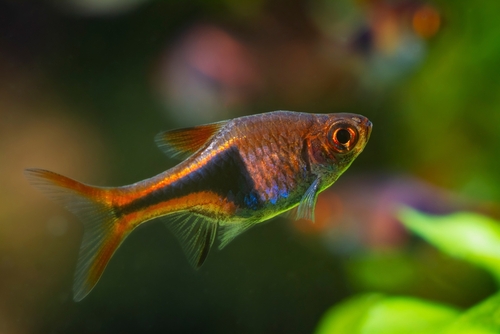
- Scientific name: Rasbora heteromorpha
- Origin: Sumatra
- Size: Around 2 or 3 inches long
- Care: Basic
These sleek red and gold-colored fish have a bold, elongated black triangle at the bottom of their tail. While this species loves plants, it’s best to skip any floating vegetation since this can prevent a Rasbora from swimming to the top of the tank to gulp in the fresh air.
On the other hand, they’re fine with a basic food pellet, worm, or shrimp diet. They get along great with Severum and have compatible water needs, although they tend to enjoy slightly harder water.
Pros of Keeping With Golden Severum
- Hardy and can stand a wider range of water parameters
Cons of Keeping With Golden Severum
- Might get eaten by bigger fish
11. Silver Dollar Fish
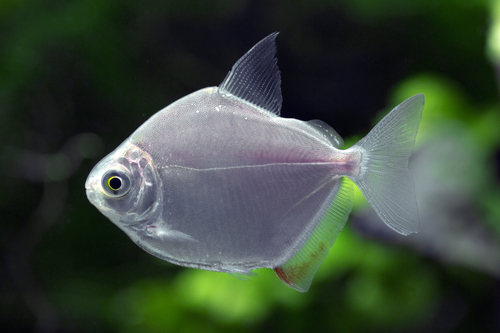
- Scientific name: Metynnis argenteus
- Origin: Brazil
- Size: 5 or 6 inches
- Care level: Medium
This schooling species makes great tank companions for gold severums since they are peaceful fish who enjoy spending time in their own school. Their round bodies look like silver coins floating around a tank which gives an interesting touch to any aquarium. Aim to keep at least six fish to keep them healthy and create a chance to watch their socialization habits.
They thrive on a simple diet and like lots of rocks and plants for hiding and nibbling purposes. Keep in mind that you’ll need to have a good filtering system on hand to keep the tank clean since a school of Silver Dollar Fish creates a hefty bio-load.
Pros of Keeping With Golden Severum
- Hardy, active, and schooling
Cons of Keeping With Golden Severum
- Require a lot of space in a larger tank and tend to devour tank plants.
12. Siamese Algae Eaters
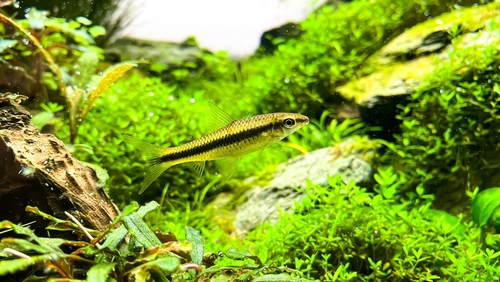
- Scientific name: Crossocheilus spp
- Origin: Malaysia and Thailand
- Size: About 4 inches
- Care: Easy
As their name suggests, this exotic gold or silver fish with a dramatic black center stripe running through its body is a fantastic choice if you’re looking for an active companion for your gold severum. They’re social beings who are great at keeping the tank clean which helps cut down on the time you need to spend maintaining it.
Siamese algae eaters’ water temperature requirements fall into the same range as severum. They also thrive at a similar water hardness, although algae eaters can tolerate slightly harder water.
Pros of Keeping With Golden Severum
- Placid and get along well with most fish species
Cons of Keeping With Golden Severum
- Might compete with other algae eaters for food sources in a crowded tank. Also known to leap out of the aquarium.
13. Congo Tetra
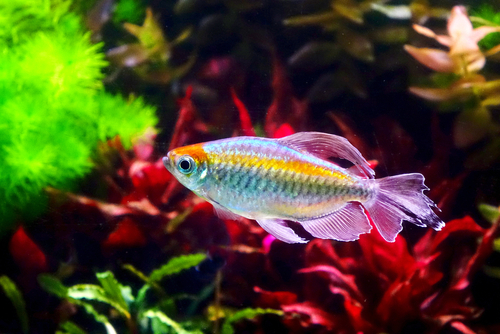
- Scientific name: Phenacogrammus interruptus
- Origin: Congo River Basin
- Size: 3 inches
- Care level: Medium
This fast and hardy little fish comes from the winding depths of the Congo River in western Sub-Saharan Africa. They look like glimmering flashes of silver, red, blue, and yellow as they playfully engage with golden severum.
Congo tetras prefer water that is fairly soft, filtered with peat, and has low lighting conditions filled with lots of vegetation that mimic their natural habitat origins in the deepest river in the world.
Pros of Keeping With Golden Severum
- Water needs are similar to severum
Cons of Keeping With Golden Severum
- Can get stressed if they don’t have enough schooling company
14. Electric Blue Jack Dempsey Cichlid
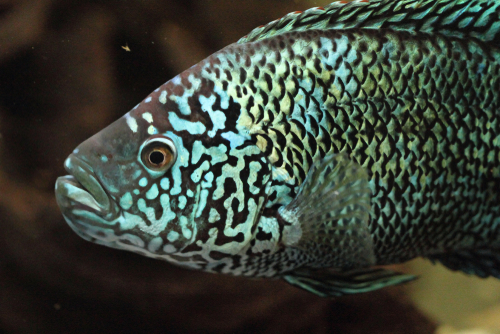
- Scientific name: Nandopsis octofasciatum
- Origin: Mexico, South America, and Honduras
- Size: Up to 10 inches
- Care level: Medium to difficult
This beautiful and blunt fish has an electric color and personality. Named after the American boxing champion, Jack Dempseys are no stranger to a fight! They can get aggressive with non-cichlids or other cichlid males during breeding times. Like the severum, Jack Dempseys are also cichlids and should make fine tank mates. They also need similar water conditions and most cichlids enjoy an omnivorous diet.
Pros of Keeping With Golden Severum
- Easy to feed with the same food as severum
Cons of Keeping With Golden Severum
- Can complete with severums for food sources and sometimes act aggressive
15. African Butterfly Fish
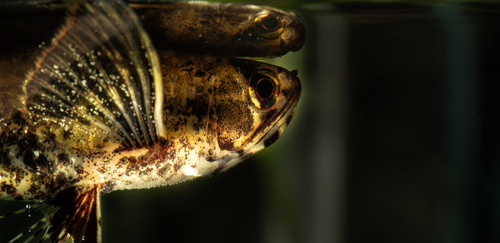
- Scientific name: Pantodon buchholzi
- Origin: Western Africa
- Size: Around 6 inches
- Care level: Moderate
These unique fish hover at the surface of the tank where they lie still to wait for food to land. Their brown, black, and yellow scales and long, tiered caudal fins help them stay camouflaged in plain sight while they wait for food. They enjoy still water that is tropically warm.
They’re a good choice if you want a tank companion that is easy to care for and doesn’t take up as much room.
Pros of Keeping With Golden Severum
- Generally peaceful temperament
Cons of Keeping With Golden Severum
- Might act predatory towards smaller fish
Conclusion
Once you pick out your 15 best Golden Severum tank mates, you can try adding them one by one to help them get used to one another.
Aim to get an aquarium on the larger side if you plan to keep at least 6 to 12 fish together. Most fish get along better and stay healthier if they have a cleaner tank with more room to swim.
Once you have a big enough tank and adjust the water parameters for the fish that you choose, pay attention to their behavior to ensure that everyone is compatible and enjoying themselves.
FAQs
Do Golden Severum Fish Make Good Tank Mates?
Unlike other kinds of cichlids that can act predatory and aggressive towards other fish, golden severums make excellent tank mates for a wide range of medium-size fish.
Avoid putting tiny fish like guppies in with severums since they might get swallowed for dinner. A severum does just fine living on its own, but it’s also a mostly peaceful soul that won’t go out of its way to antagonize anyone that isn’t small enough to look like food.

Ian Sterling, founder of Fishlab.com, began his aquarium journey over 30 years ago, driven by a deep fascination for fish and their diverse personalities. His website, Fishlab.com, is dedicated to making fishkeeping accessible and enjoyable, offering beginner-friendly guidance, expert insights, and a community for aquarists to connect and share experiences.


